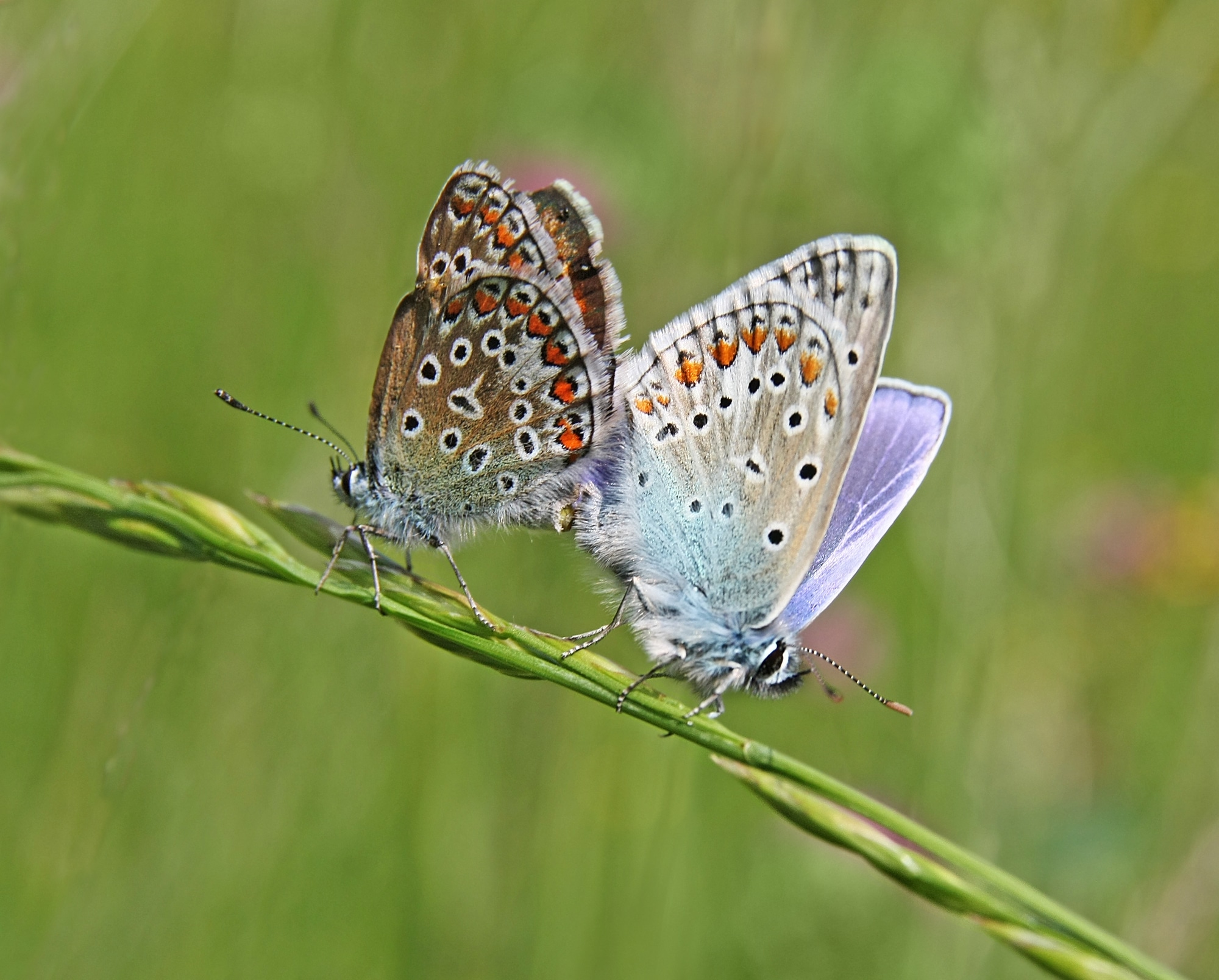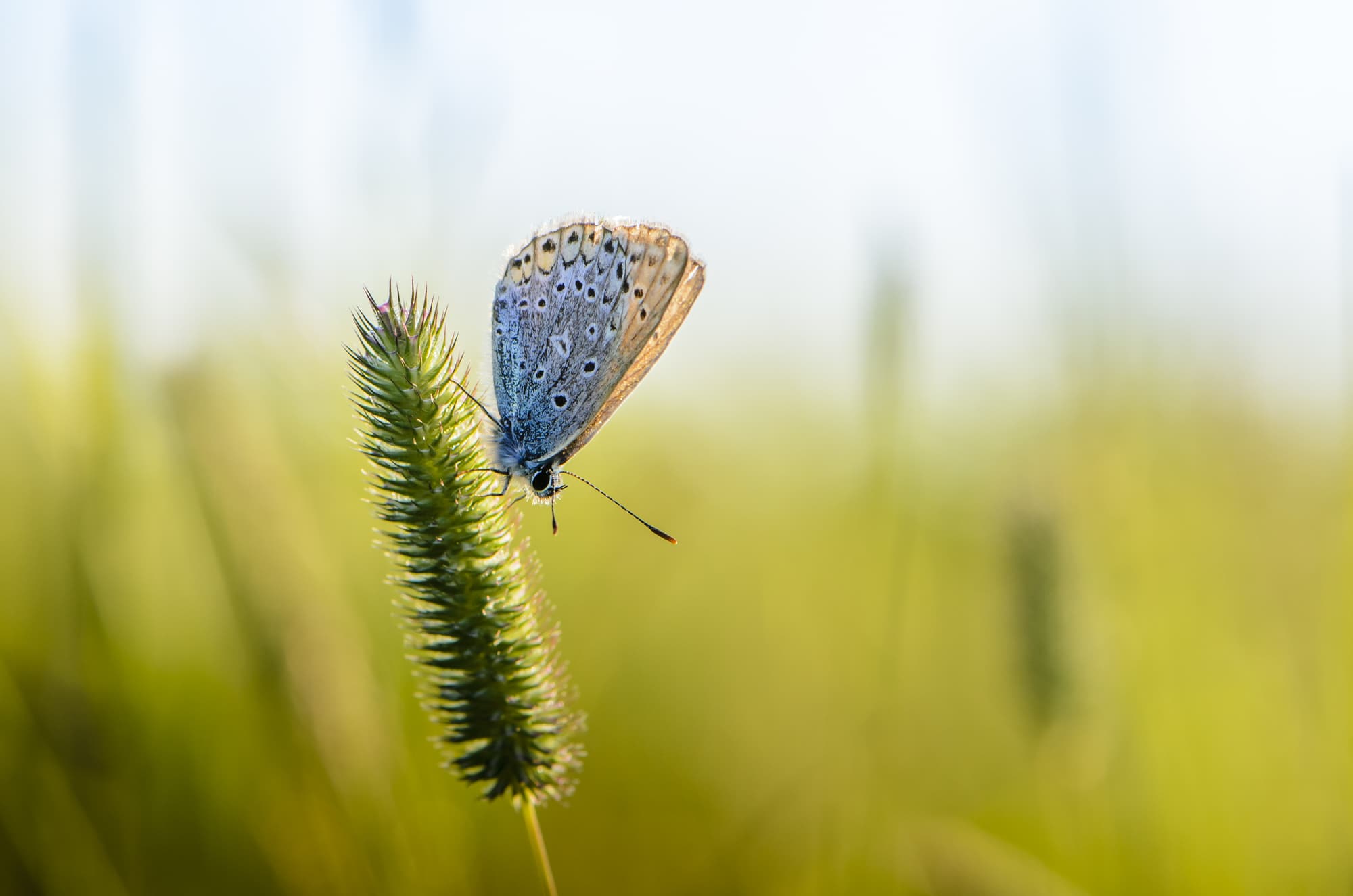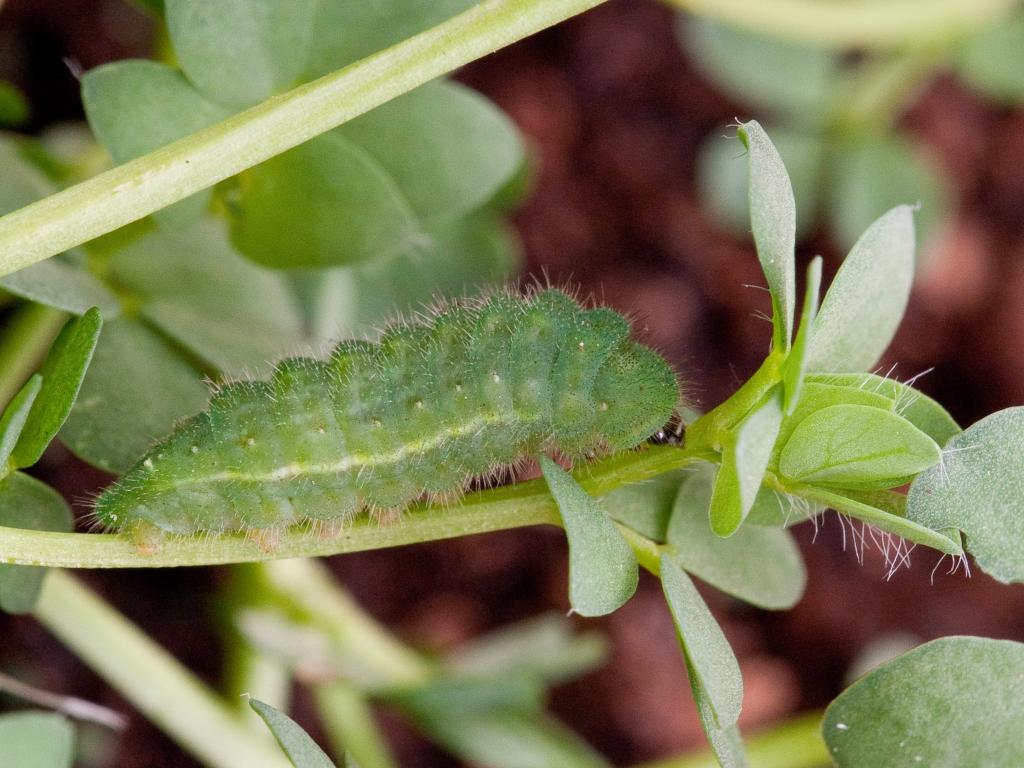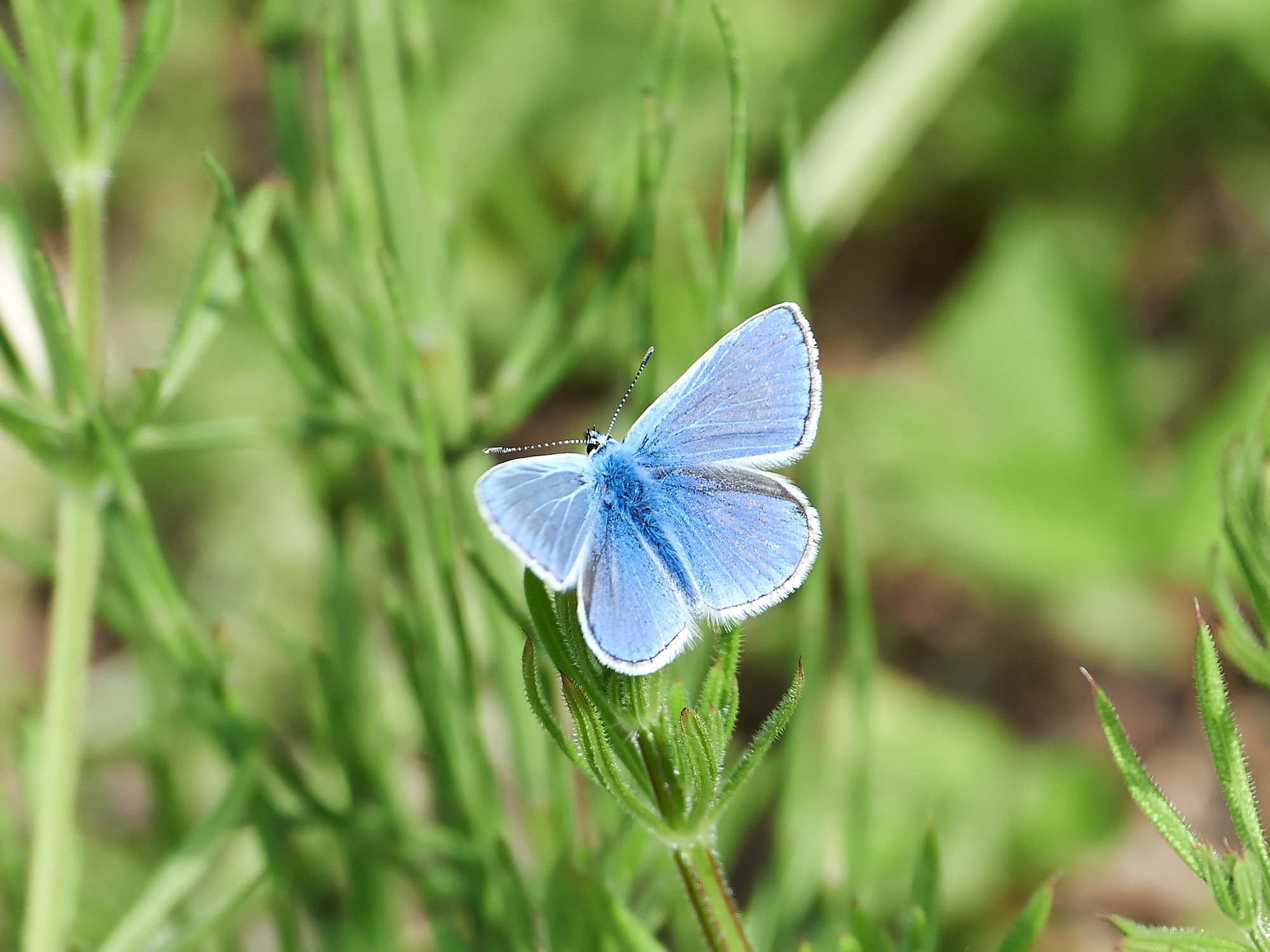There are many different species of blue butterfly all around the world, such as the silver studded blue, holly blue, chalkhill blue, adonis blue, and small blue butterfly. All of which have a strikingly similar appearance. However, in this article, we will discuss the most common of them all, which is aptly named the common blue (scientific name Polyommatus icarus).
The common blue is a widespread species of butterfly in Europe. It is also known as the blue Argus and is named after the bright blue colour of its wings, which are characterized by blue and black eyespots in every forewing. There are other numerous spots on both sides of both wings, giving the butterfly an advanced camouflage system to escape from predators.
Common Blue Identification
The male common blue butterfly has bright blue wings with black and white fringe borders. It is one of the largest European butterflies, with a wingspan reaching 29-36 mm. Its upper sides are “like liquid metal”, and the underside wings are pale brownish orange with black and white spots. The wings sometimes appear yellowish due to blue dusting. The male common blue butterfly displays undersides that typically have brown veins with blue or violet-blue interspersed at the wing edges.
The female common blue butterfly is somewhat different, with almost completely brown wings on the upper side (but with some blue dusting in the centre) and black and orange spots. They also and a brown border and white fringe around the upperside of their wings. Like the male, it has orange spots on the underside.

Where and When To See Them
The common blue flies from April to October, but it is most common in June and July. It is found mainly in European countries such as Spain, France, UK (especially Southern England), and Italy.
In the UK, it is commoner in southern areas and very rare in the far north. In Ireland, colonies are most numerous in counties near England with unimproved grassland or scrub habitats with bluebells, such as Dorset, Devon and Gloucestershire.
The common blue butterfly lives in grassy habitats and prefers warm, open spaces for flying around. They love sunny areas along paths in woodland rides and grassy meadows because that is where their food source (flowers with nectar) grow best. They like to settle down where people make a lot of foot traffic for easy access to many different kinds of flowers and plants containing nectar. It’s not uncommon to see them on roadside verges and the occasional waste ground.
You may find these butterflies on their own but are more likely to see them in small groups feeding together on a patch of bluebells or plant nectar-rich borders. The males patrol areas of high activity, looking for receptive females. Colonies can be widespread where bluebell woodlands grow near gardens and verges.

Common Blue Caterpillar Foodplants
The common blue butterfly caterpillar (larvae) mainly feeds on Common Bird’s-foot-trefoil (Lotus corniculatus) and other nectar sources such as bramble, knapweed, bluebells and thistles. It also eats oak leaves (less so on beech or sycamore).

Common Blue Butterfly Food
The common blue is not naturally a predator, it feeds on plant nectar which is converted in the butterfly’s body into amino acids to produce chitin for its exoskeleton and protein for reproduction.

Common Blue Lifecycle
The common blue has a three-stage lifecycle. It starts off as an egg laid by the queen blue butterfly on the underside of a young plant leaf (common blue larvae feed on this leaf after hatching). The female also often lays her eggs by inserting them into the buds of plants such as nettles or dandelions before they have opened fully- this stops other animals from eating them while they are still vulnerable.
The blue caterpillar goes through five instars, shedding its skin each time it grows bigger. After the fifth instar, which takes about 2 weeks to complete, the caterpillar pupates for around 10 days before emerging from its cocoon as an adult blue butterfly
Common blue butterflies have very short lives: only about 3-5 weeks long. Most adults will mate and lay eggs within this time frame, but if they do emerge later in summer, their lifespan is still relatively short because of increased competition from other blue butterflies.
The common blue also needs access to larvae food plants for their caterpillars otherwise many will die before pupating.
Sources and References
- Common Blue – (Polyommatus icarus) – ukbutterflies.co.uk
- Common Blue Butterflies – uksafari.com
Sam loves to learn about animals and their habitats. He has been a nature lover from a very young age, and has been writing papers and articles about wildlife for as long as he can remember.
